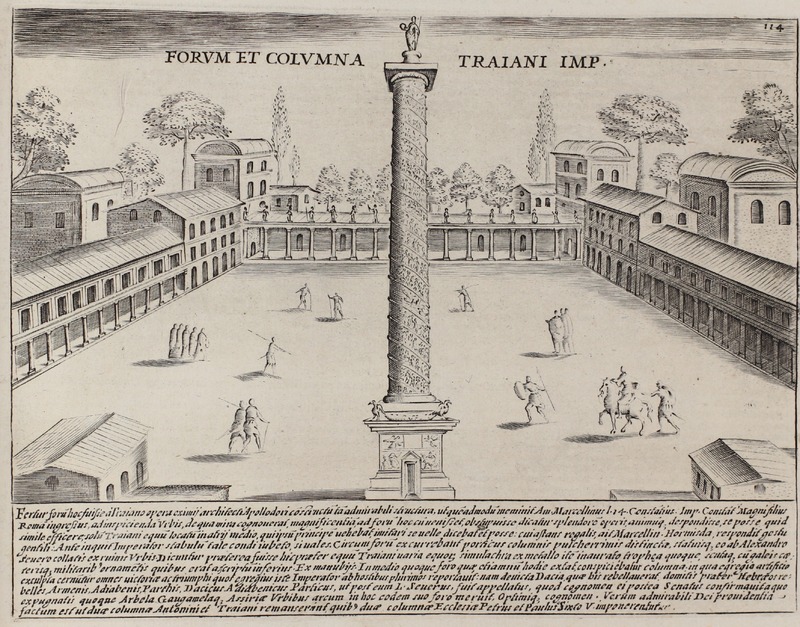17th Century
Lauro (1612-1641) depicts Trajan’s column in the foreground, at the center of a large courtyard. At the bottom of the column, he provides a rough sketch of the bas reliefs, and sculpted eagles, but does not include the senatorial inscription evident on the monument today. He demarcates the column’s relief sculptures with 19 curved, diagonal lines, but he fails to provide detailed representations of the frieze's scenes. At the top of the column, Lauro illustrates a sculpture of a St. Peter. He does not portray the door underneath this sculpture that would have opened to allow climbers of Trajan’s Column to look out over the city of Rome. In the courtyard, Lauro depicts a series of figures; some carry shields and spears, while others wear long robes and walk in groups. The column’s placement and the buildings surrounding it have been imagined by the artist, as the monument was originally constructed in the center of a small courtyard bordered by libraries. Perhaps Lauro is trying to emphasize the column’s continuous existence and historical value in seventeenth-century Rome.
